Five Christmas recipes from history you can make and enjoy today
4-5 minute read
By Ellie Ayton | December 11, 2024

Killer trifles? Rainbow castles? Ration Christmas pudding? Here we reveal five weird and wonderful recipes of Christmases past. Will you be reaching for the recipe, or consigning it to history?
From mincemeat omelettes to trifles that could kill you and wartime puddings made with meagre rations, we delved into our newspaper archive to understand what our ancestors ate at Christmastime and why.
Food historian Peter Gilchrist of Tenement Kitchen has been exploring how Christmas foods evolved with the times, as our families sought to be more creative with the ingredients they had – particularly navigating food shortages and rising costs during trying times.
The origins of mince pies
Mince pies tend to divide opinions these days. But did you know we’re just eating a meatless version of the original?
Peter says, 'Mincemeat is a medieval invention: think of beef served in pastry, with dried fruits and Middle Eastern spices’. One Victorian newspaper gave a recipe for such a dish and commented, 'Vegetarian mincemeat is usually made when wanted’.
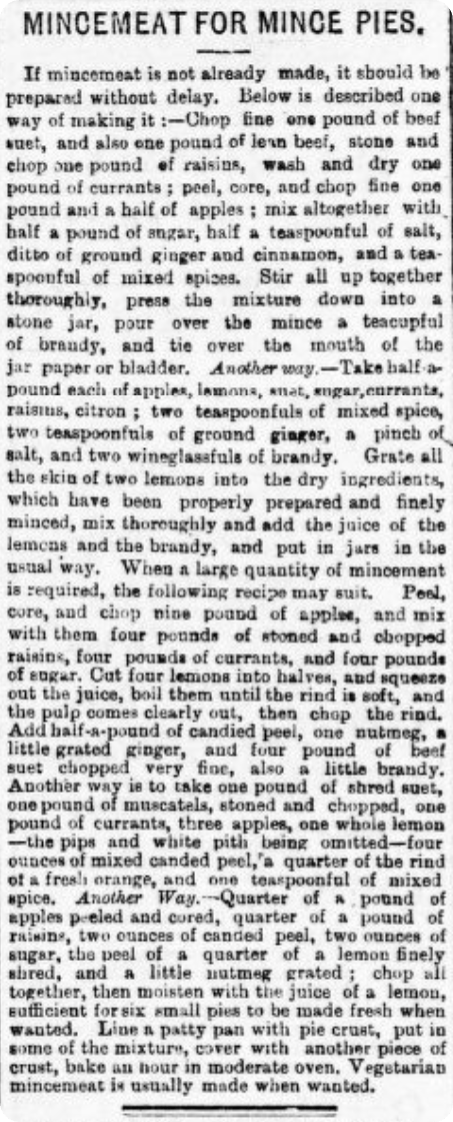
Fancy trying a more traditional mincemeat pie this Christmas? Download the recipe from 1887 here.
Health-conscious Victorians and their desire for sweeter foods saw the original meat mince pie take a back seat in favour of suet or fruit.
When the Second World War meant Christmas foodstuffs were restricted, our wartime family may have gone for ‘fatless’ mincemeat, substituting suet for dates, candied peel, and nuts.
Could this Christmas trifle kill you?
We might see a boozy trifle filled with fruit and strawberry jelly taking centre stage today, but our Victorian ancestors were obsessed with green desserts. Housewives and cooks flocked to the chemist for the most popular colouring agent around – Scheele’s green.
There was just one catch – the main ingredient was arsenic.
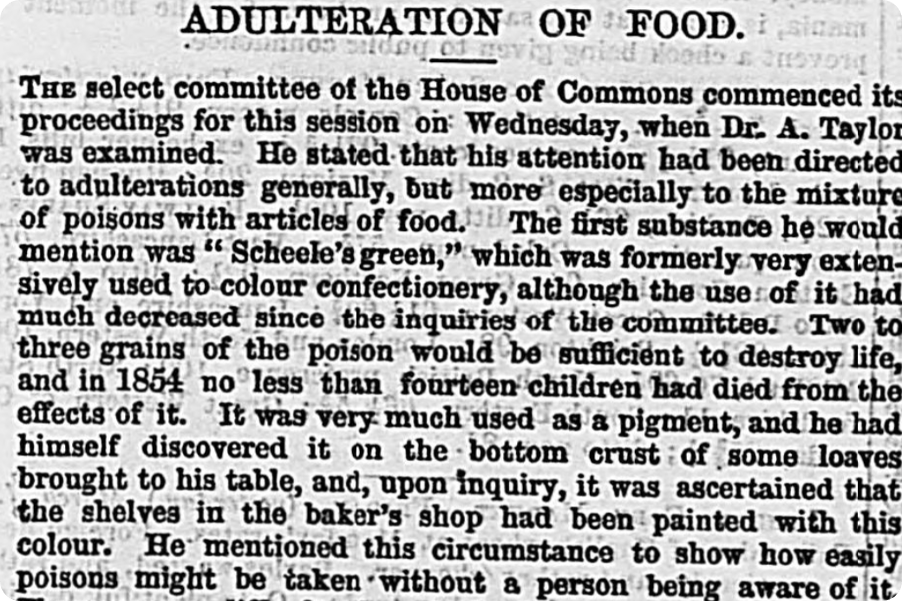
The dangers of Scheele’s green debated in the House of Commons, Chester Chronicle, 8 March 1856.
But not even the threat of untimely death by trifle could prevent us Brits from our layered desserts. Even in the face of another world war, there would always be space for trifles on the menu. We still enjoy it today, albeit without the poisonous green colouring…
The humble Christmas pudding
During World War 2, the iconic Christmas pudding was reinvented as the Rationed Christmas pudding.
Food scarcity caused by disruptions in global trade, attacks on merchant ships, and the diversion of resources to the war effort meant that traditional ingredients like raisins, sultanas, and butter were scarce.
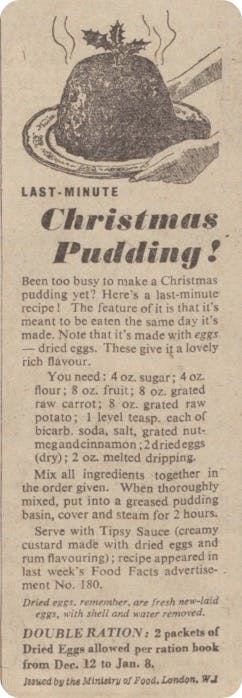
No eggs? No problem. Download the recipe for a wartime Christmas pudding here.
Grated carrots and potatoes replaced dried fruits and butter was substituted for margarine, but the Christmas pudding remained a centrepiece of British festive traditions.
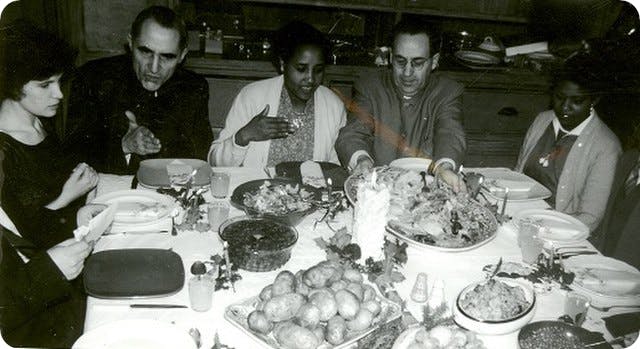
Christmas dinner in London, 1958
This was one of many recipes the Ministry of Food released to drum up the Christmas spirit in a time of uncertainty. Peter says:
"The Christmas pudding has always been more than just a dessert - it’s a symbol of coming together to celebrate. The wartime adaptations show how deeply ingrained these traditions were, as families went to great lengths to recreate the familiar, even when supplies were scarce. The Rationed Christmas Pudding is a reminder of how people found ways to preserve joy and normalcy during one of the most challenging times in history."
The weirdest Christmas foods ever - should these be left in the past?
We’ve all got that one, slightly strange Christmas dish from our childhood we’d like to see the back of. Here are a few more outlandish recipes we spotted in our newspapers.
1970s nostalgia: rainbow castles
Looking for some Christmas baking ideas that will stand out from the crowd? One of the more whimsical recipes we uncovered is for rainbow castles a festive dessert that brought colour and cheer to Christmas tables.
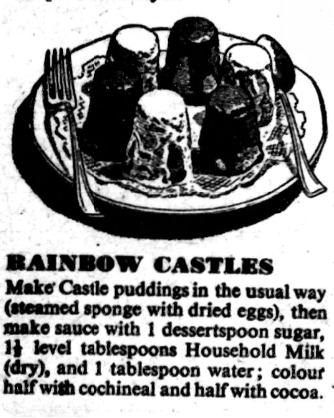
A recipe for rainbow castles, in Perthshire Advertiser,18 December 1943.
Made with a steamed sponge using dried eggs and topped with a two-tone sauce (pink with cochineal and brown with cocoa), this vibrant dessert captured the colourful tones of the disco era and turned humble ingredients into a festive treat. Peter says:
"Rainbow castles are a brilliant example of retro ‘70s cuisine, where people emulated the colourful cultural trends they saw around them, as well as being influenced by new foods and ingredients coming over from the US and Europe. In this recipe, the bright colours and creative presentation added a festive flair to what were otherwise very humble ingredients. It’s a testament to the power of imagination and resourcefulness during tough times."
Did you try rainbow castles as a child?
The sweet soufflé omelette
One of the surprising festive finds is the sweet soufflé omelette, a dessert that reimagined the humble omelette as a much-loved pudding in 1974.

Download the recipe for the sweet soufflé omelette here.
Combining whisked egg whites, a touch of sugar and leftover mincemeat, this recipe offered households an indulgent way to use what was on hand. Served warm with a sprinkle of icing sugar and brandy, it brought a touch of festive flair to rationed dining. Peter says:
"The sweet soufflé omelette is a perfect example of how families turned necessity into invention. Eggs were a valuable resource, and this recipe shows how they could be stretched into something special. With its light texture and hint of sweetness, it transformed everyday ingredients into a sweet dish - just the kind of ingenuity that kept spirits high during a tough Christmas season."
We'd rather leave this one in the 20th century if we're honest...
Now it's your turn
Every generation brings something new to our classic Christmas recipes, tweaking the food we know and love and leaving new culinary traditions behind.
Do you remember powdered eggs in your Christmas desserts? Or adding fruity mincemeat into an omelette? Give some of these old Christmas recipes a try for yourself. Why not search for some in the newspapers? And remember to share your results with us on social media by tagging @findmypast.
Related articles recommended for you
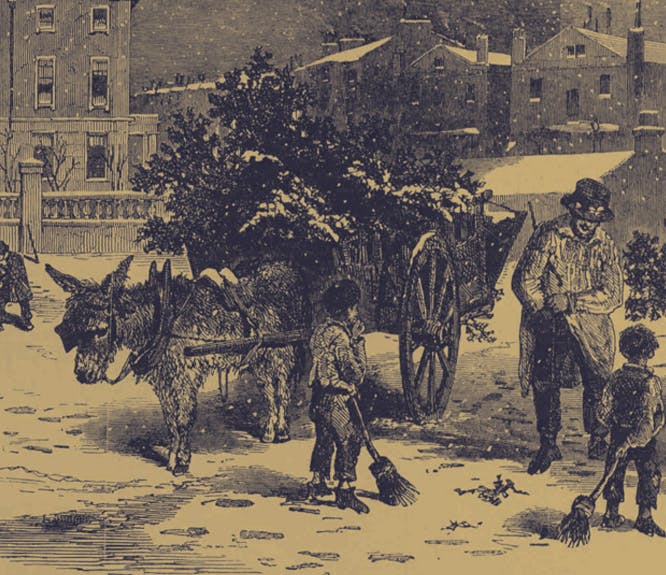
The secret histories of your Christmas decorations, found in old newspapers
Discoveries
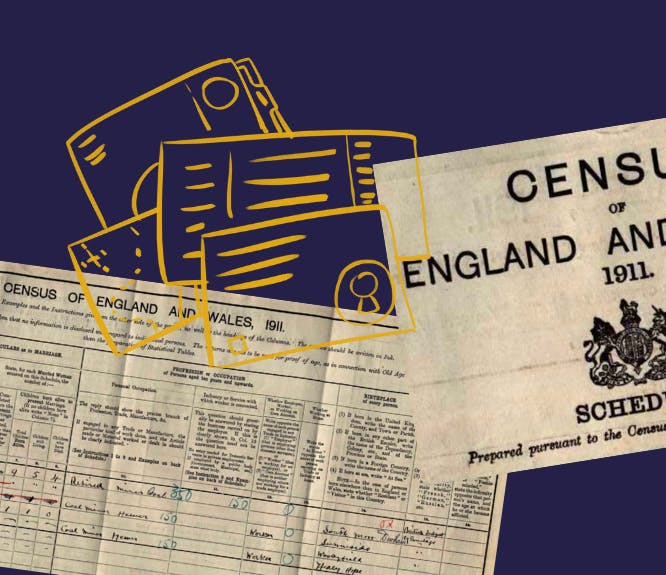
Seven surprising finds in the 1911 Census
Discoveries

6 must-read books on the vast history of sport and football in Britain
Help Hub


